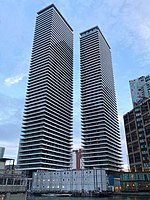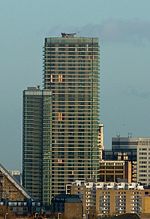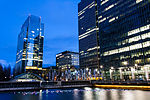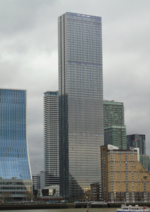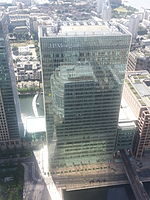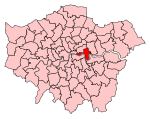40 Marsh Wall
Canary WharfCanary Wharf buildingsHotel buildings completed in 2016NovotelSkyscraper hotels in London ... and 2 more
Skyscrapers in the London Borough of Tower HamletsUse British English from October 2016

Novotel London Canary Wharf also known as 40 Marsh Wall is a 127 m (419 ft), 39-storey hotel in the Isle of Dogs, London, just south of the financial district of Canary Wharf. It has been designed by BUJ Architects for AccorHotels as one of the company's Novotel hotels and has 313 rooms. It is the tallest all-hotel building in the United Kingdom and the tallest Novotel in the world.Construction began in July 2014, costing an estimated £60 million.Planning permission was granted for the hotel in November 2010 by Tower Hamlets Council. It replaces an office building of six-storeys and 43,768 sq ft which was formerly on the site.
Excerpt from the Wikipedia article 40 Marsh Wall (License: CC BY-SA 3.0, Authors, Images).40 Marsh Wall
Marsh Wall, London Isle of Dogs
Geographical coordinates (GPS) Address External links Nearby Places Show on map
Geographical coordinates (GPS)
| Latitude | Longitude |
|---|---|
| N 51.50117 ° | E -0.023261 ° |
Address
Novotel London Canary Wharf
Marsh Wall 40
E14 9TP London, Isle of Dogs
England, United Kingdom
Open on Google Maps
